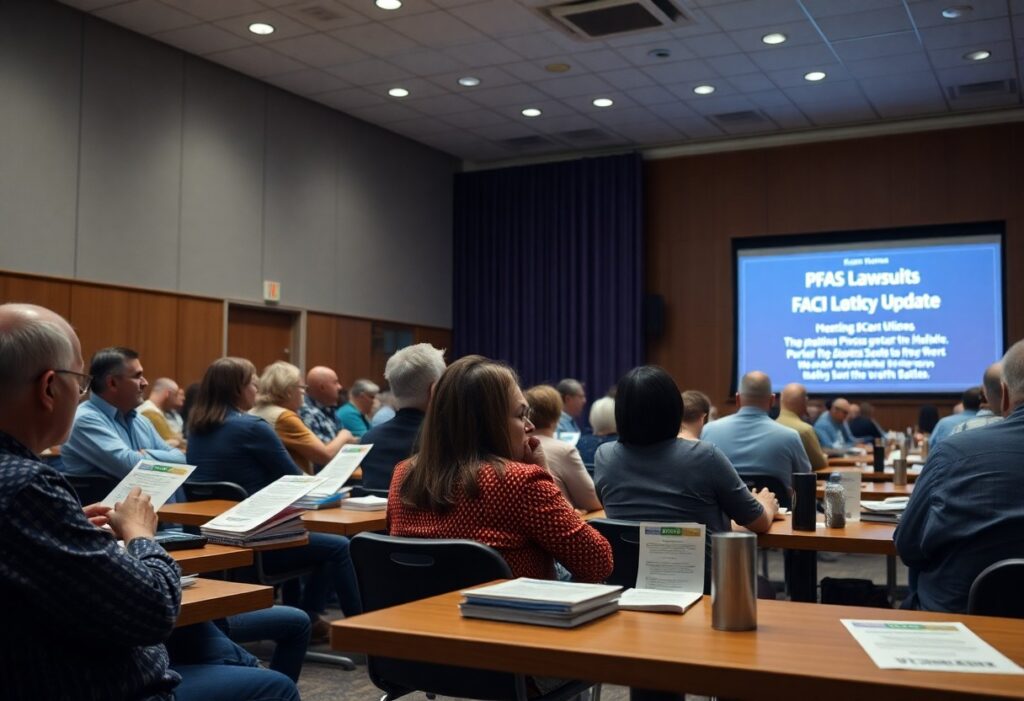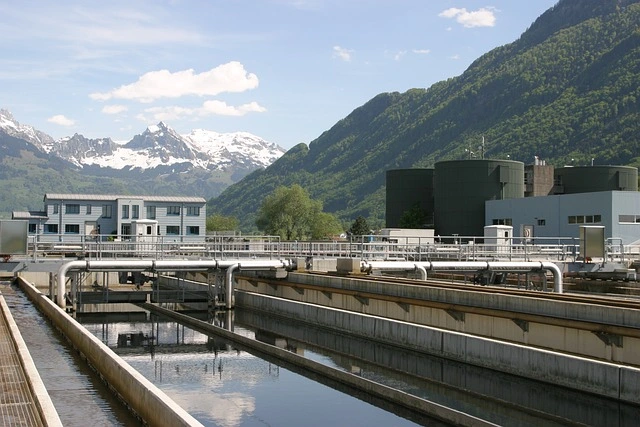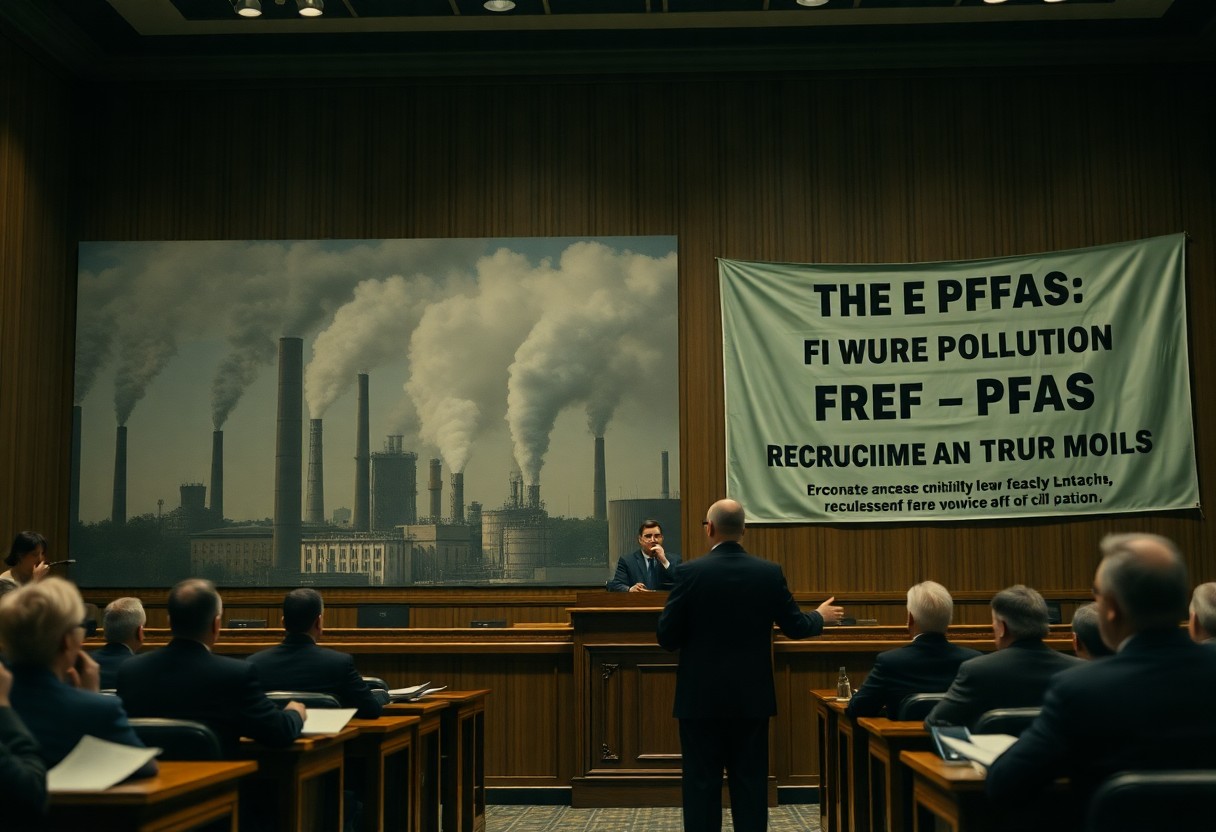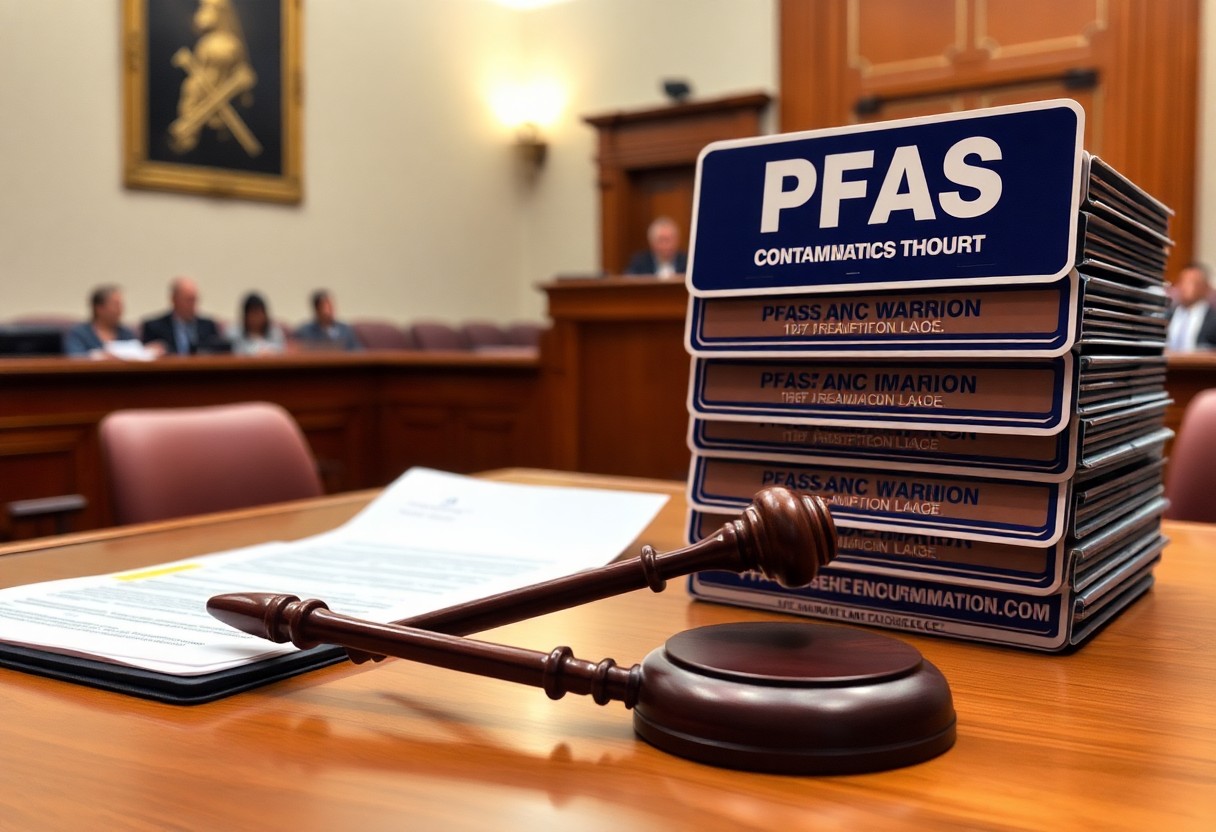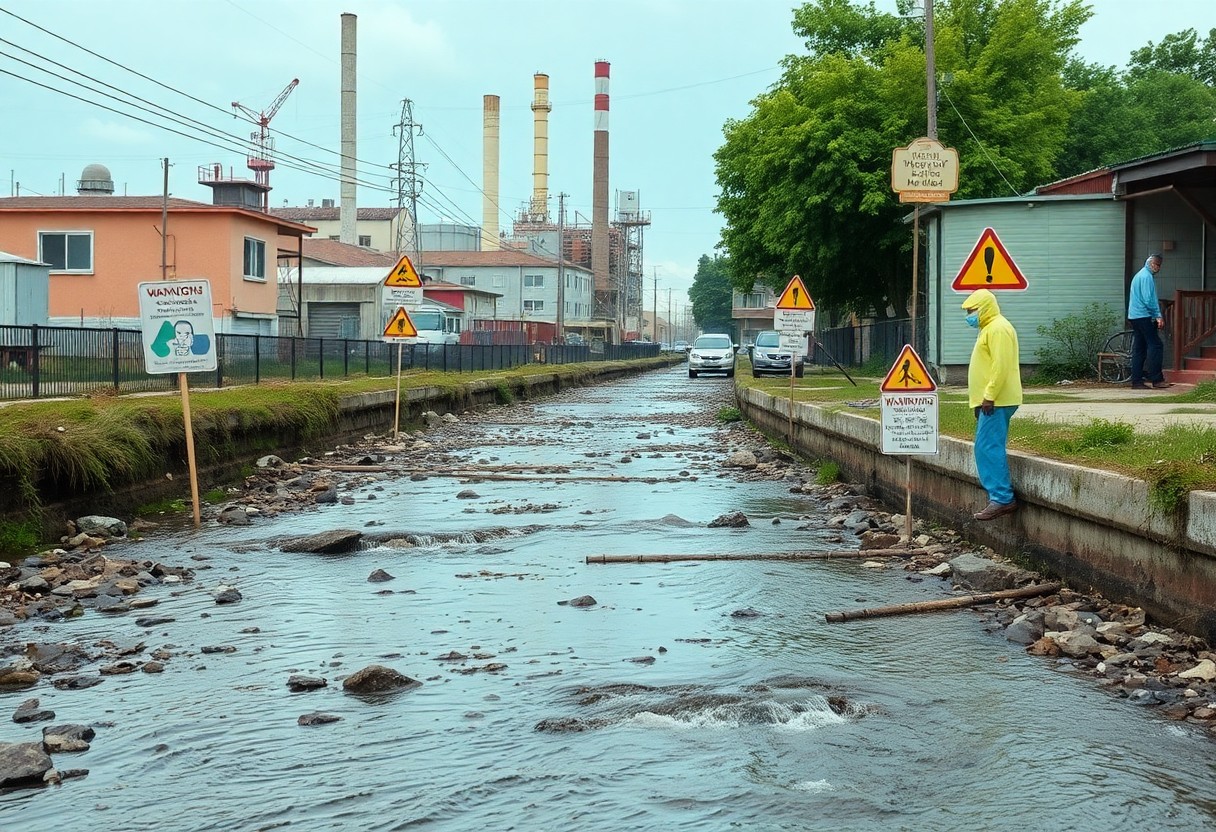Many communities grappling with water contamination from per- and polyfluoroalkyl substances (PFAS) are seeking justice through lawsuits. These legal actions not only aim to hold polluters accountable but also have significant implications for your community’s health, environment, and economy. You may find that the outcomes of these lawsuits can lead to changes in water quality management, increased awareness about environmental safety, and the potential for compensation for affected residents. Understanding the impact of these legal efforts is important for those who may be directly or indirectly affected by these pervasive chemicals.
Understanding PFAS: Definition and Sources
To understand the impact of PFAS on communities, it is crucial to know what these substances are and where they come from. PFAS, or per- and polyfluoroalkyl substances, are a group of man-made chemicals used in various industries since the 1940s. They are often referred to as “forever chemicals” because they do not break down easily in the environment, leading to long-lasting contamination of water sources, soil, and air.
What are PFAS?
Among the many chemicals that affect our environment, PFAS stand out due to their widespread use and persistence. These synthetic compounds are utilized for their water- and grease-resistant properties, making them popular in products like non-stick cookware, food packaging, and protective clothing.
Common Sources of Contamination
One significant source of PFAS contamination is the use of firefighting foam, particularly at military bases and airports. Other sources include industrial discharges, wastewater treatment plants, and consumer products like stain-resistant fabrics.
Indeed, PFAS can enter your community’s water supply through various routes, including industrial runoff and improper disposal of products containing these chemicals. When firefighting foam containing PFAS is used, it can seep into the groundwater, affecting nearby residential areas. Additionally, facilities that manufacture or use PFAS may inadvertently release these substances into the environment, contributing to widespread contamination that may impact drinking water sources and public health.
Health Risks Associated with PFAS Exposure
Some studies have linked PFAS exposure to various health issues, making it imperative to understand the potential risks. These man-made chemicals, often found in contaminated drinking water, have been associated with adverse effects on your immune system, thyroid, and reproductive health. You might experience health challenges due to the accumulation of these substances in your body, underscoring the importance of awareness and action.
Short-term Health Effects
One immediate concern is the potential for short-term health effects, such as skin irritations, gastrointestinal issues, or flu-like symptoms. If you have been exposed to PFAS, you may notice these symptoms soon after contact. It’s vital to consult with healthcare professionals if you experience these disturbances.
Long-term Health Consequences
After prolonged exposure to PFAS, the long-term health consequences can be significant. You may face increased risks of serious conditions, including certain cancers, liver damage, and developmental delays in children. Understanding these risks can help you make informed decisions regarding your health and the safety of your community.
PFAS have been linked to a variety of chronic health issues that can affect you and your loved ones over time. Research indicates a correlation between PFAS exposure and health problems like high cholesterol, immune system dysfunction, and even decreased fertility. The accumulation of these substances in the body can lead to adverse health effects that may not manifest for years, making it imperative to be vigilant about water quality and safety in your community. Staying abreast of local PFAS contamination incidents can empower you to take proactive measures for your health and well-being.
The Legal Landscape of PFAS Lawsuits
Clearly, the legal environment surrounding PFAS lawsuits is evolving rapidly, with numerous states and communities taking action against corporations responsible for water contamination. Lawsuits often center around claims related to public health risks and environmental damage, making the path to justice complex. As you navigate this situation, it’s vital to stay informed about the changes in regulatory frameworks and the growing body of case law surrounding PFAS liabilities.
Overview of PFAS Litigation
Behind the surge in PFAS litigation is a growing awareness of the harmful effects these substances have on human health and the environment. You may find that many communities impacted by PFAS contamination are pursuing legal action not only to seek compensation but also to hold polluters accountable for their actions. This shift signifies a broader societal push towards transparency and justice regarding environmental issues.
Recent High-Profile Cases
An increasing number of high-profile PFAS cases have garnered significant media attention, emphasizing the extent of the problem and the urgent need for accountability. These cases often involve large corporations and government entities, showcasing the contentious nature of PFAS litigation and its far-reaching implications for those affected.
At the forefront of these recent high-profile cases are lawsuits filed by communities against major companies like DuPont and 3M, alleging a direct link between PFAS manufacturing and widespread water contamination. You may find that these cases not only seek financial compensation but also push for stricter regulatory measures to prevent future contamination. The outcomes of such cases could set important precedents, influencing how PFAS litigation unfolds and impacting the legal strategies of affected communities nationwide.

Economic Impacts on Affected Communities
All economic aspects of communities suffering from water contamination can be significantly affected. PFAS lawsuits often lead to increased cleanup costs, loss of jobs, and a decline in local business revenues. This can create a ripple effect, impacting your community’s overall financial health. The enforcement of regulations and legal actions not only strain public resources but may also contribute to long-term economic instability in your area.
Cleanup Costs and Financial Burdens
Above all, cleanup costs associated with PFAS contamination can place substantial financial burdens on local governments and taxpayers. The necessary remediation efforts to address water quality issues can require significant funding, diverting resources from important community services and infrastructure improvements.
Impact on Property Values
Along with rising cleanup costs, the presence of PFAS in drinking water can adversely affect property values in your community. This environmental issue can deter potential buyers, creating a stagnant real estate market. As awareness of contamination spreads, homeowners may face difficulties selling their properties or may see their property values diminish over time.
To illustrate this, consider how prospective buyers often perform environmental checks before purchasing homes. If PFAS contamination is revealed, it could lead to decreased interest in your neighborhood, which in turn drops property prices. Consequently, you might find yourself facing financial challenges, whether it is selling your home at a loss or dealing with declining investment in your community. The lingering effects of water contamination not only impact individual homeowners but can also diminish the overall economic vitality of your area.
Community Response to PFAS Contamination
Keep in mind that your community’s response to PFAS contamination can significantly impact the healing process. Residents often unite to share their experiences and push for necessary actions, raising awareness about the dangers of PFAS. This collective resolve strengthens the community, encouraging more people to engage in advocacy and highlight the importance of clean water, ultimately leading to better health outcomes and policy changes.
Grassroots Efforts and Activism
Against the backdrop of PFAS contamination, grassroots movements often emerge as powerful forces in advocating for clean water. You may find local activists organizing protests, community meetings, and educational campaigns to raise awareness about the health risks associated with PFAS. Your involvement in these efforts can amplify the voice of your community and motivate others to take action against water pollution.
Role of Local Governments and Agencies
Against the rising tide of PFAS contamination, local governments and agencies play a vital role in addressing the issue. You can see them taking initiatives to test water sources, provide resources for affected residents, and enforce regulations aimed at reducing PFAS exposure. Your local leaders are often the first line of defense, and staying informed on their actions can empower you and your community in the fight for safer water.
Local governments are responsible for implementing regulations and ensuring compliance with environmental standards. You might find that your municipality is organizing public hearings or collaborating with state and federal agencies to address PFAS contamination. By engaging with your local officials and advocating for transparency, you help hold them accountable to prioritize community health and safety. Your voice, alongside others, can lead to stronger policies and greater resource allocation to combat the effects of PFAS in your water supply.
Future Implications of PFAS Lawsuits
Unlike traditional environmental litigation, the growing wave of PFAS lawsuits highlights an urgent need for comprehensive solutions. As communities grapple with water contamination issues, these legal actions not only aim for accountability but also stimulate broader awareness and policy reforms that can prevent future exposure. Your understanding of these implications is vital, as they may shape community responses and governance in public health and safety.
Changes in Regulation and Policy
After numerous lawsuits have surfaced, there is a push for stronger regulations surrounding the use of PFAS substances. The legal outcomes may compel authorities to establish clearer standards and guidelines for water quality, leading to enhanced protective measures in affected communities. You may benefit from these changes, as they aim to safeguard your health and environment in the face of ongoing contamination risks.
Long-term Effects on Community Health and Environment
Against the backdrop of persistent PFAS contamination, the long-term effects on community health and the environment are substantial. Communities exposed to these harmful chemicals may experience increased rates of health issues, such as cancer, hormone disruption, and immune system problems. These potential health disparities can leave lasting marks, impacting not only your well-being but also the economy and quality of life in your community.
In addition to direct health concerns, the environmental ramifications of PFAS contamination can linger for generations. The pervasive nature of PFAS compounds means they resist degradation, accumulating in soil, water, and living organisms. This bioaccumulation can disrupt local ecosystems and food sources, affecting agriculture and wildlife. As community members, you may face challenges such as decreased property values and loss of trust in vital resources. Understanding these long-term consequences enables you to advocate for effective remediation and foster a healthier environment for future generations.
Conclusion
From above, it is clear that PFAS lawsuits significantly impact communities affected by water contamination. These legal actions can lead to better cleaning and monitoring of water supplies, increased public awareness, and potential financial compensation for those harmed. By engaging in these lawsuits, you contribute to holding responsible parties accountable and fostering improvements in water safety regulations. As a member of the community, your participation can lead to transformative changes that enhance the health and well-being of your environment.


